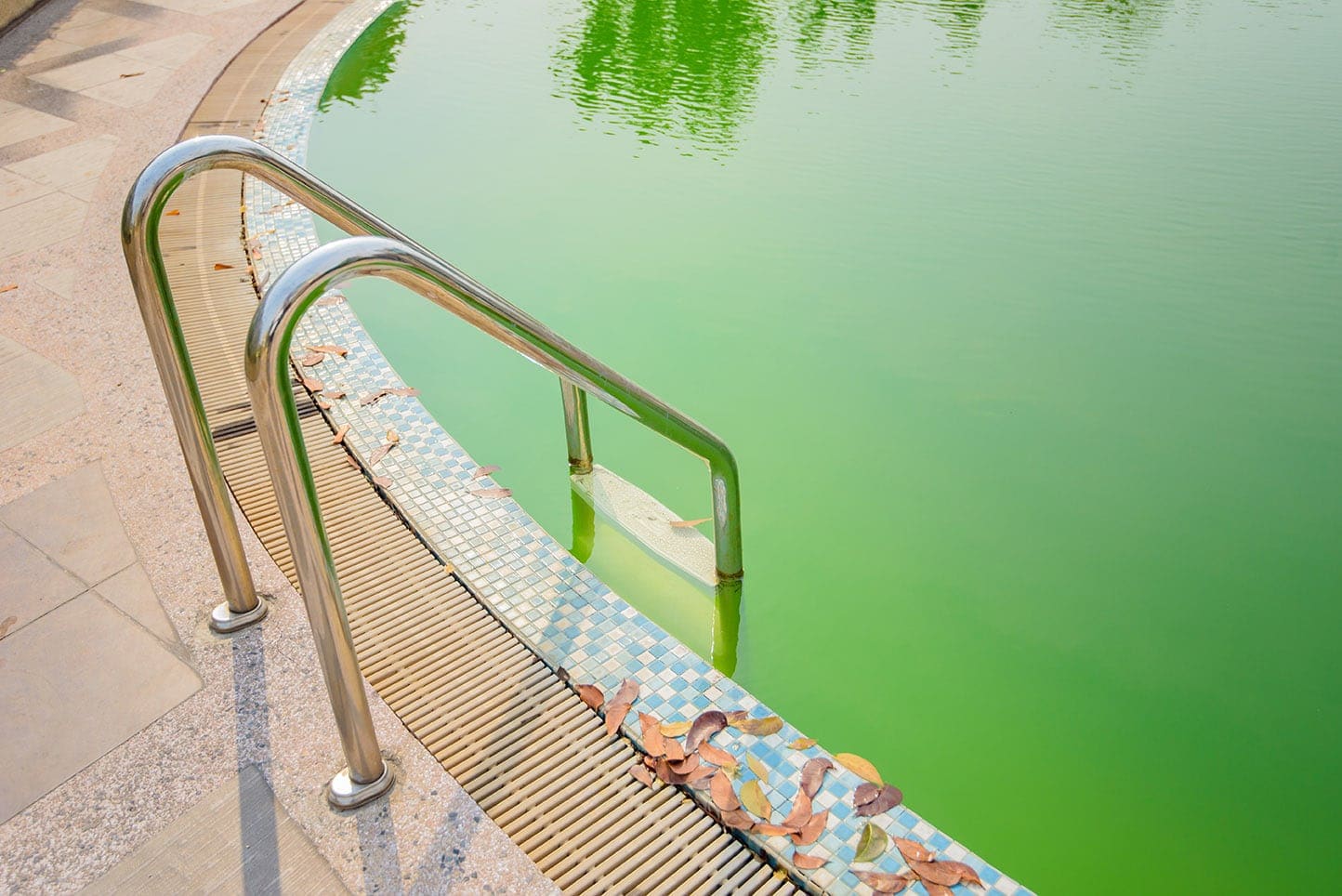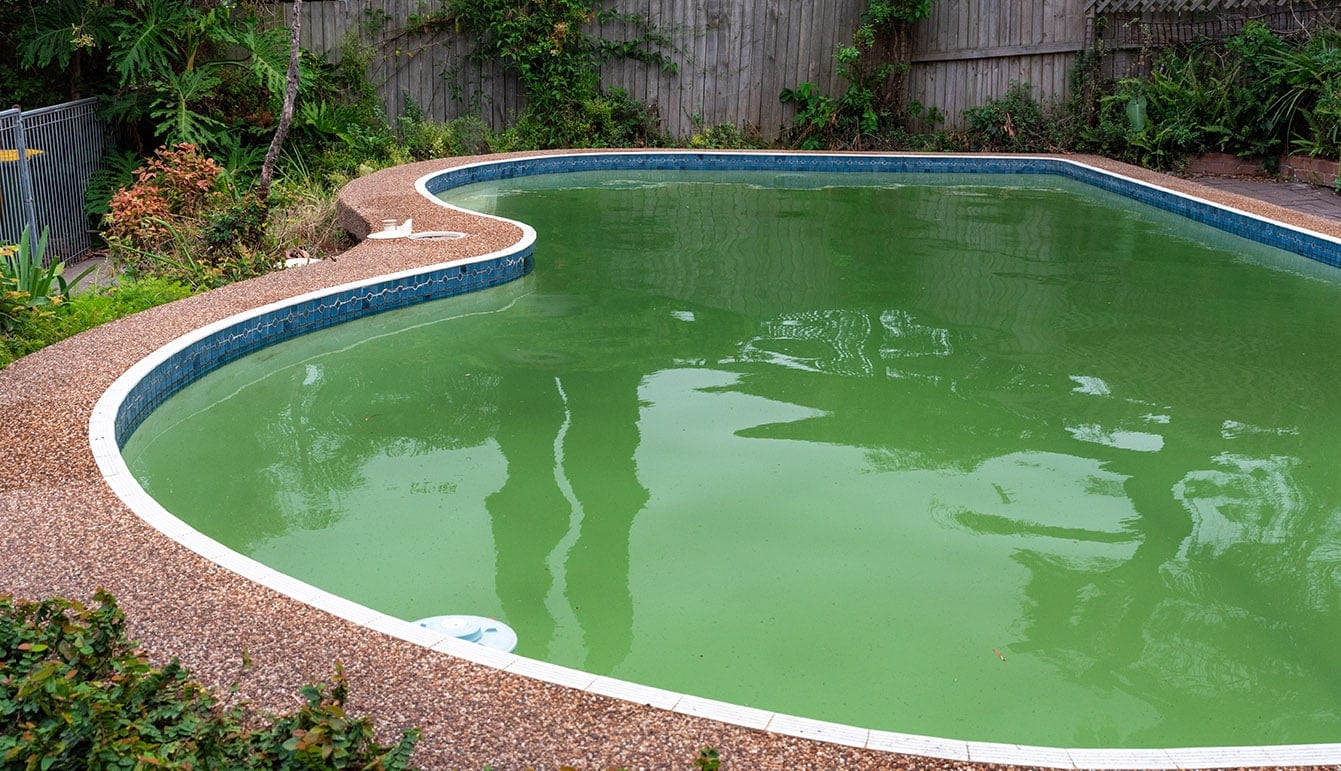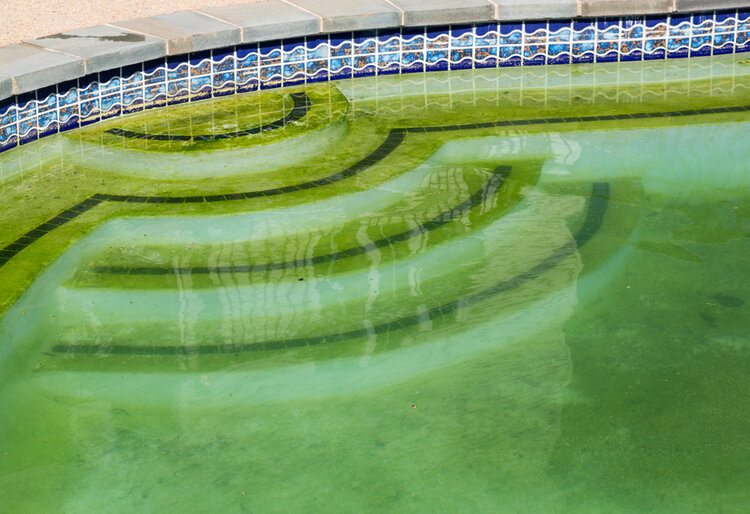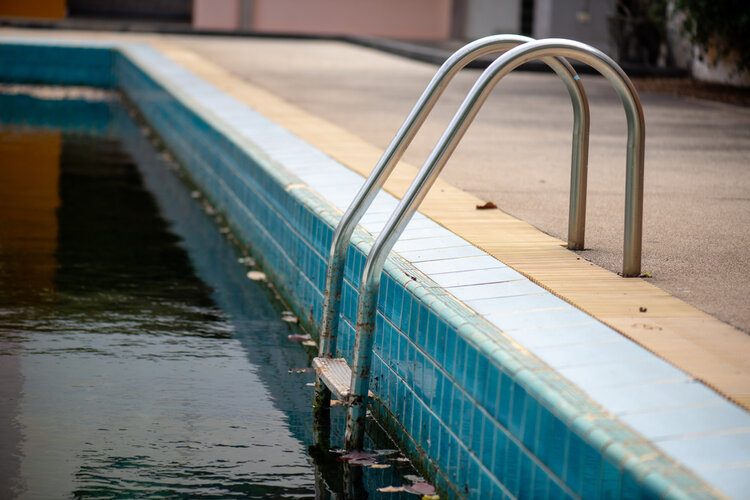3 Different Types of Pool Algaes (With Pictures)
-

- Last updated:


Algae is a word that pool owners never want to hear. Even thinking about algae can make even the most seasoned pool owner cringe. Walking outside and finding a pool covered in algae is extremely frustrating. To properly treat your algae situation, it’s essential to know what you are dealing with. The three main types of algae that you will encounter as a pool owner are green algae, yellow (mustard algae), or black algae.
In addition to algae looking terrible and keeping you from swimming, it brings up other issues if not treated in a timely fashion. Algae will create a breeding ground for mosquitos and other insects. One of the quickest ways to ruin a summer day is a green pool and a bunch of mosquito bites.

The 3 Most Common Types of Pool Algaes
1. Green Algae

Green algae is the most common form of algae in pools. This type of algae forms in stagnant water when there is a chemical imbalance in the pool.
The longer the water stays stagnant, the worse the situation will get. What we have experienced in the past is that sometimes it takes only the slightest chemical imbalance to open the door to algae. It does not take long, and they spread quickly.
Green algae does not attach to anything. Instead, it just floats in your water. Green algae can be transferred from another body of water to your pool from clothing or pool toys.
Some pool owners will notice an increase in green algae after a thunderstorm. Lightning has been known to cause the rise of algae in pools because it creates a buildup of nitrogen.
2. Yellow Algae

Yellow algae will appear yellow and can be more challenging to detect. The Yellow is not an intense color yellow, and it can look like dirt on the floor of the pool. Being aware of yellow algae and keeping an eye on it will help to prevent an outbreak that could have potentially been avoided.
3. Black Algae

We saved the worst for last. Black algae is the most challenging type of algae to remove. Not that you want an algae infestation of any kind, but you don’t’ want the black algae invading your pool. Unlike green algae that float freely, black algae will anchor itself to the walls and bottom of the pool. It is very tough and resistant to many algaecide treatments.
Black algae has a coat, almost like wax around the leaves, that makes scrubbing one of the most effective ways to remove it.
People often think that black algae is more dangerous, similar to black mold. In reality, black algae itself is not harmful; however, it can harbor some bacteria that would make it advantageous to stay out of the swimming pool. In addition to the bacteria, the pool will be packed full of chemicals while things are getting sorted out, not the best time to swim.

Why Do I Have Algae?
Now that we have identified the three different types of algae let’s talk about why you have algae in the first place. Several things could be causing this problem, but here are a few of the most common.
- Problems with filter and filtration system
- Stagnant water
- Not running the pool filter often enough during prime sun hours
- Poor circulation of water
- Chemical imbalance
- Spores in the air
How Can I Get Rid Of Algae?
The most crucial step in the removal process is first to narrow down what kind of algae you are dealing with. Once you have the type figured out, you can start to work on a new maintenance regime to make sure you don’t run into this issue again. Luckily pool companies make a variety of products that can help you remove algae from your pool and keep it away. The necessary steps of algae removal include…
- Vacuum the pool
- Brush/Scrub the Algae
- Test the water
- Shock the water
- Run the filter for 8-12 hours straight
- Test the water
- Clean the filter
This is a simplified version of the process, but it includes all of the necessary steps to get your pool swimmable again.
Keeping Algae Away
The best ways to keep algae away from your pool and make sure your friends don’t start asking about the swamp in your backyard is maintenance. Regular preventative maintenance will do wonders when it comes to keeping algae away. Make sure to run your filter for 8-12 hours on those hot summer days. Brush the sides of your pool often to keep the algae from growing or forming in the first place.
Remember that a pleasant pool shock is something you should do periodically throughout a pool season.
Don’t save this for when a problem occurs. Use pool shock according to manufacturer’s recommendations periodically as a part of regular pool maintenance.

Conclusion
No algae are good algae.
Although it is going to take you longer to clear up a black algae outbreak than green algae outbreak, you will be able to get both issues cleared up in time. Stay on top of pool maintenance. Check your chemicals weekly, and we know it’s hard but keep that pool filter running to avoid stagnant water. Algae loves a pool sitting inactive at 1:00 on a hot summer afternoon. Keep that thought in mind next time you decide to take an hour or so off the pool filter run time.
Featured Image Credit: SunyawitPhoto, Shutterstock
Contents
